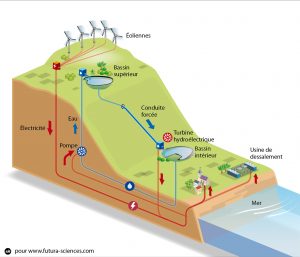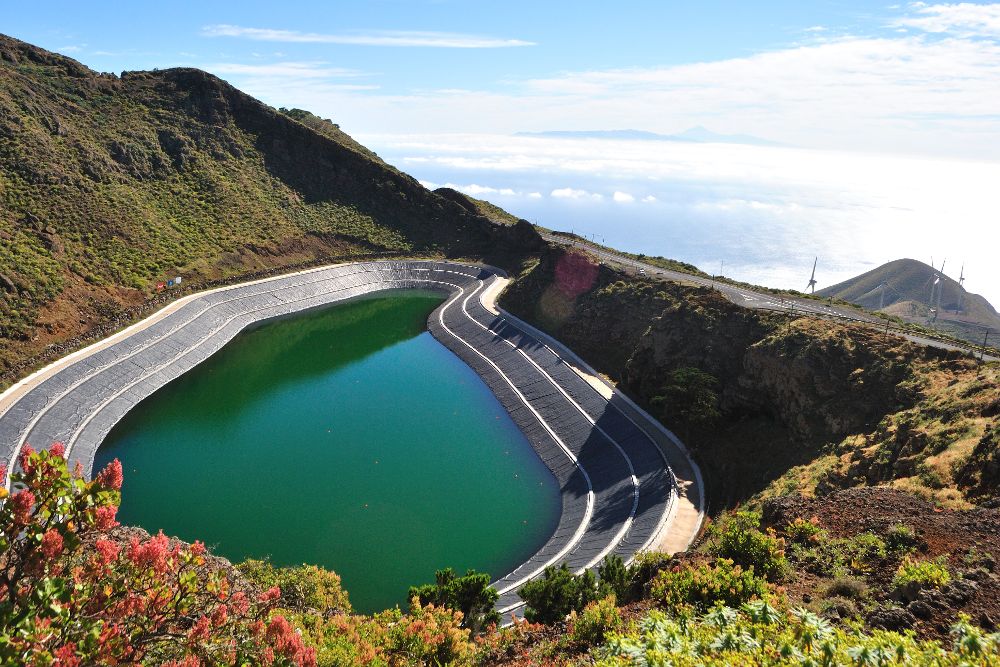The Island of El Hierro (Canary Islands, Spain) covered its whole electricity demand between the 25th of January and the 12th of February of this year on a 100% with renewable resources, avoiding the use of pollutant energy sources for over more than 560 hours in 2018, and a total of almost 2.000 hours since it started operating.
This major success comes mainly explained by the positive progress of El Hierro’s first wind and pumped hydro system, La Gorona del Viento, set up on 2014. The basic idea behind the functioning of this power plant is simple: an initial deposit of water is set on an adequate high ground area of the island, and another one is set on lower ground. The water running downwards produces energy, which, together with the input brought by a small wind farm, is used to pump the water up, back to the first deposit, while producing enough surplus to also feed the electricity demand of the island.

Since the moment it started normally operating, on summer 2015, Gorona del Viento has produced more than 20.250 MWh. Its progress is being remarkable: on the first half-year of performance, its share on the total demand of electricity was 19,2%. 2016 was the first whole year for the power plant, and it reached 40,7% of the total demand. On 2017, the share kept climbing up to 46,5%.
As the president of Gorona del Viento Belén Allende pointed out, one of the keys to explain the continuous improved performance of the plant is the close collaboration with Red Eléctrica de España (REE), the corporation that controls the national electricity grid in Spain and operates the power transmission system. In this regard, REE added that the recent operative updates introduced in the system will keep leading to efficiency improvements.
The positive effects that this initiative has brought and keeps bringing to the island of El Hierro are numerous: most obvious ones are directly connected with its environmental impact. Since Gorona started operating, it has been estimated than the emission of more than 30.000 tonnes of CO2 has been avoided, as well as saving the consumption of a great amount of diesel, which translates in lower energetic dependence, one of Canary’s biggest concerns.
Beyond that, Gorona del Viento has also helped re-launching the brand of El Hierro, promoting it as an environmentally friendly destination for regular tourists, while also becoming an interesting destination for scientific tourism, going from professionals in the energy field, to students, environmental engineers… Besides, it has helped involving the inhabitants of the island into sustainability and increasing their awareness concerning these topics.
Overall, Gorona del Viento’s progress is slowly taking it from an experiment on how to switch to a 100% renewable energy context to a wider reality, becoming an example not only for the other Canary Islands but to anyone in the world interested on how to effectively perform this transition.



